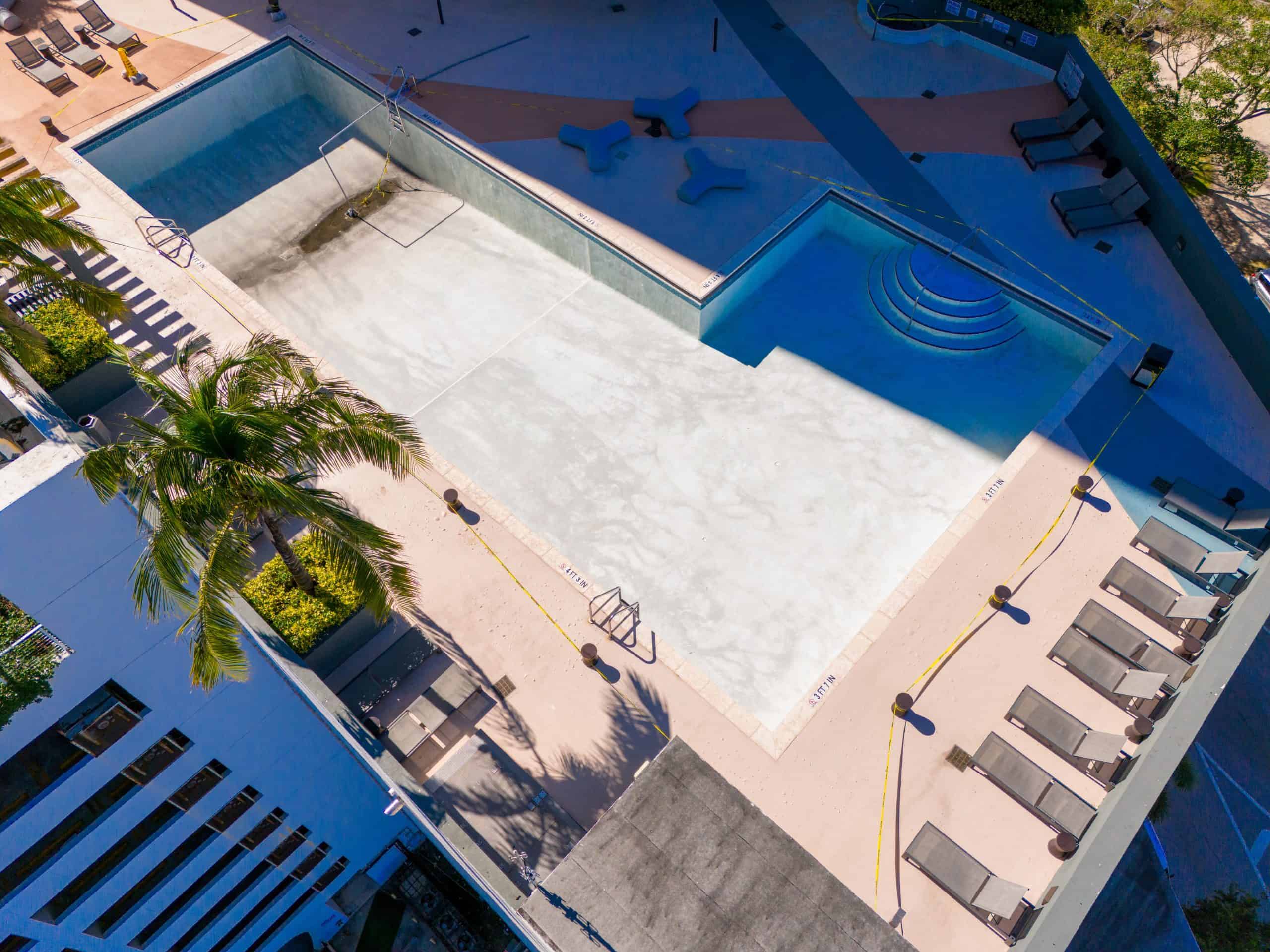Professional pool resurfacing that handles Florida’s climate and gets your pool back to smooth, safe condition.


Your pool becomes safe to walk on again. No more rough spots catching feet or swimsuits. The surface looks clean and fresh instead of stained and worn out.
Water chemistry becomes easier to balance because the new surface isn’t porous or damaged. You spend less time fighting algae blooms and more time enjoying crystal-clear water that actually stays clear.
The updated finish can completely transform how your pool area looks. Modern pebble or quartz finishes give you that high-end appearance that makes the whole backyard feel renovated and valuable again.
We’ve been handling pool resurfacing throughout Coral Isle and Broward County for years. We understand exactly what Florida’s intense sun, humidity, and year-round pool usage do to surfaces.
We’re CPO certified and focus on materials that actually work in South Florida’s challenging climate. No shortcuts, no experimental approaches on your pool – just proven techniques that last in this environment.
You’re dealing with contractors who show up when we say we will and finish projects on schedule. That matters when you want your pool back and functional.

First, we drain your pool completely and remove the existing surface down to the shell. This isn’t a patch job where we slap new material over old problems – you get a fresh start that will actually last.
Next comes thorough surface preparation and any necessary structural repairs. If there are cracks or issues with the underlying shell, we fix them properly before any new material goes on. This step separates professional work from quick fixes.
Then the new finish gets applied in carefully controlled conditions. Whether you choose traditional plaster, pebble, or quartz aggregate, it goes on right the first time. The whole process typically takes 5-7 days from start to finish, weather permitting.

Ready to get started?
Every project includes complete surface removal, proper prep work, and professional installation of your chosen finish. You get materials rated specifically for Florida conditions – not generic products that won’t hold up here.
In Coral Isle’s climate, most pools need attention every 8-12 years depending on usage and maintenance. The constant heat, UV exposure, and humidity here accelerate wear compared to northern climates where pools sit covered half the year.
We also provide detailed startup procedures and maintenance guidance to protect your investment. Most homeowners don’t realize that the first few weeks after resurfacing are critical for long-term durability – we make sure you know exactly what to do.

Ready for a Pool You'll Love?
Contact us today for a free quote!
DCP Pool Services
Company
Useful Links